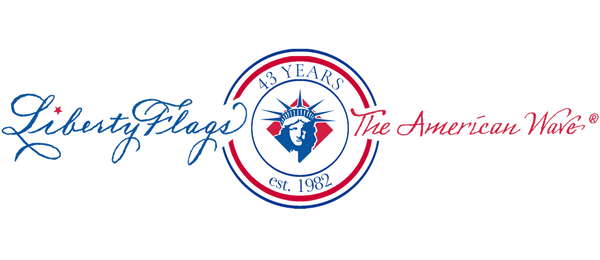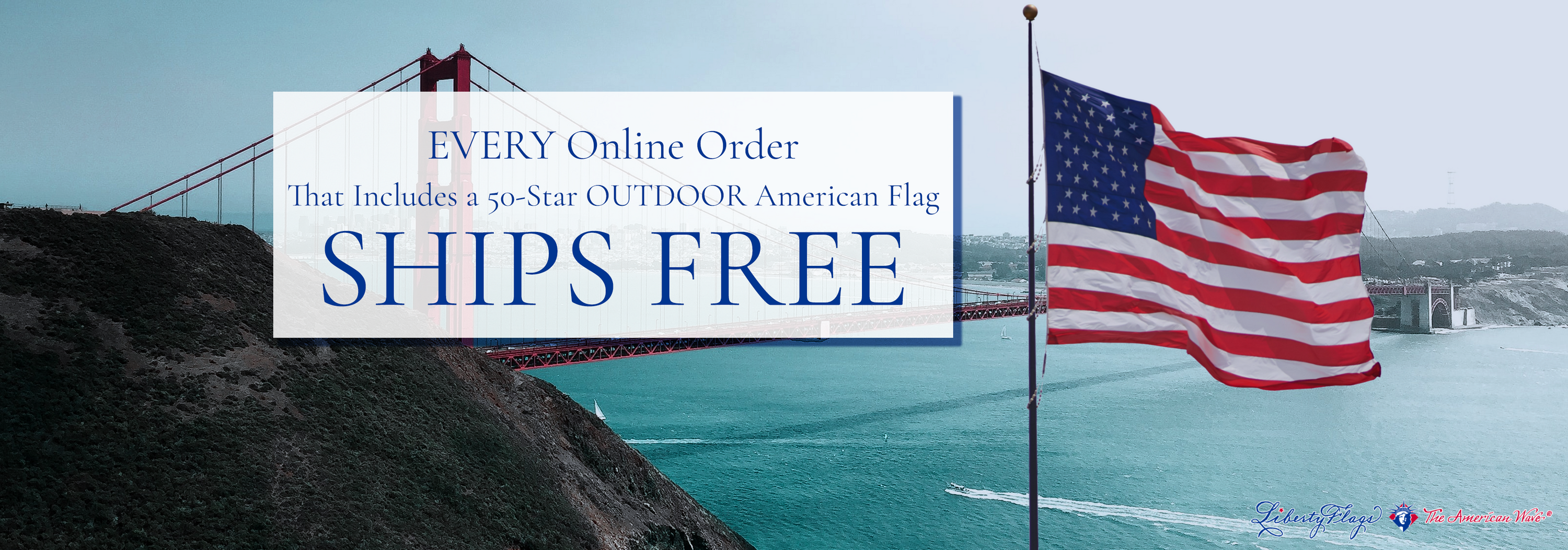
Renewed Focus on an Old Problem
Since 1989, authorities in the United States have come together in support of domestic manufacturers through observances of Made in the U.S.A. Month (usually in July) and through solutions targeted at protecting the interests of workers and consumers.
As a result, most industries will see some kind of regulatory activity that affects the intensity of their competition with overseas companies, but in the flag industry, here are recent examples of what we have seen.
- In July of 2024, Congress passed a law requiring all federal agencies to purchase only American-made flags for use anywhere on public grounds (read that Congressional law here). Now, every American flag on government property is legally required to be 100 percent manufactured in the United States.
- In July, 2025, the Federal Trade Commission updated and re-released guidelines for American companies and consumers as part of the continued effort to educate and protect buyers in the United States. That FTC statement can be read here.
This is great news, but...
Why Are Laws Like This Needed?
Most domestic flag buyers want American-made U.S. flags, but they may not be fully aware of how to ensure that the flag they are buying has been made in the U.S.A.
In part, this is because importers sometimes exploit laws made for the benefit of American citizens and companies...
There is a section of the U.S. Trade Facilitation and Trade Enforcement Act called the de minimus law, which is intended to make it easier for American e-commerce companies and American tourists to bring their imported items into the U.S. through customs, as long as they are collectively valued below a threshold of $800.
Small and mid-size companies have been taught by online shopping giants to leverage this law; they avoid large container shipments and opt to move their packages into the United States in smaller bundles.
As a result, low-value packages are able to enter the United States with no inspection or verification of their materials, country of origin, or labeling — specifically including, but not limited to, false claims of being manufactured here in the United States, and the use of substandard materials.

What is Being Done to Combat This Fraud?
Currently very little as it pertains to the specific problems listed above. In fact, most of the massive global companies openly, flagrantly encourage foreign actors to take advantage of loopholes.
However, the tremendous increase in the volume of imports that have entered the country as a result of this law has caught the attention of lawmakers and there has been a flurry of recent activity aimed at closing the loophole and to protect American citizens, manufacturers, and businesses. And the actions of Congress and the FTC in the last several years have been steps toward more reliable transparency and country-of-origin labeling standards.
How Can I Know My U.S. Flag is American-Made?
The good news in the meantime is that consumers can take some easy actions to protect themselves from fraud when buying an American flag. Without further ado...
- Consider the price. In most cases, if the price seems too good to be true, it probably is. Or, in the case of American flags, at the very least it probably wasn't manufactured domestically.
- If you are making your purchase from one of the global companies that provide a platform for sellers to process all kinds of products, be sure to delve deep into the seller's information until you can find the country of origin for your product. If you cannot locate the country of origin, that should be an indication to move on.
- If you are buying your American flag in person at a store that specializes in something other than flags, check the flag's packaging/label and research the company that provided the flag to the retailer (follow the tips below).
- If you are buying your American flag from an online source - even one that specializes in flags - search their website footer or "About Us" page for a physical address within the United States. If there is not an address, or only a P.O. Box, it's probably best to choose a different company.
- If there is an address, Google it. Is it an actual retail location? If so, great! However, if the address refers to a residence, a warehouse, a single unit in an office building, a mailbox rental facility, or something else then it’s probably best to either try recommendation #11 below or to choose a different company.
- Check the writing on the website. Do the descriptions match the products? Do they seem computer generated? Good product descriptions will refer to the exact product being sold and will have the semblance of human tone and local grammar.
- Looking for a short list? The Flag Manufacturers Association of America (FMAA) are dedicated to researching and cataloging the manufacturers and retailers who produce and/or sell American flags that are exclusively American-made, i.e., all materials and labor sourced from within the United States. They publish and update an alphabetized list, which can be viewed on their website here.
This certified list can also be used to verify/cross reference any flags that may have the FMAA logo fraudulently applied. - When you place an order online, always make a note of the date, time and website where you made the purchase, and keep this information handy until you receive your order. After you place an online order, watch to make sure you receive an order confirmation containing contact information matching the entity where you made your purchase. If you don’t receive an order confirmation within 1-2 days it’s best to contact the company for resolution or to notify your bank or credit card company of possible fraud.
- U.S. Textile Law requires that the country of origin and material content must either be printed on the flag's heading or on a label that is sewn into the flag's heading (for flags larger than 12"x18"). Those flags without are probably made overseas.
- When buying an American flag with embroidered stars and sewn stripes, keep in mind that American flag manufacturers exclusively use 200-denier nylon bunting, 100% cotton bunting, or two-ply polyester bunting in the flag-making process. If you see any other fabric/material (or "material content missing"), then the flag was probably manufactured overseas.
- Lastly, and possibly most informatively, can the U.S. employees of the company you might purchase from be contacted by phone or email? If you call them, do they pick up the phone? If you submit a message to their contact form, do you receive an email reply or a call back within 1 to 2 business days?
Stay the Course, Fly American-Made
While it can be tough and there is definitely an ever-changing landscape of obstacles and distractions, we can still find ways to buy with confidence and accuracy. As always, let us know if you have questions about our products. Here's to all-American flags for all Americans!

Fly With Us!
Send us your pictures American flags, flagpoles, ropes, or other accessories! We would be honored to feature your photography in our blog or on Facebook. Remember, photos of damaged flags and accessories are valuable, too.
Was this information useful to you?
Do you have suggestions for information you'd like to see here? If so, please send them our way!
Please send all of your suggestions or questions to service@LibertyFlags.com. We want to hear from you!
Have a great day, from your friends at LIBERTY FLAGS, The American Wave®.

